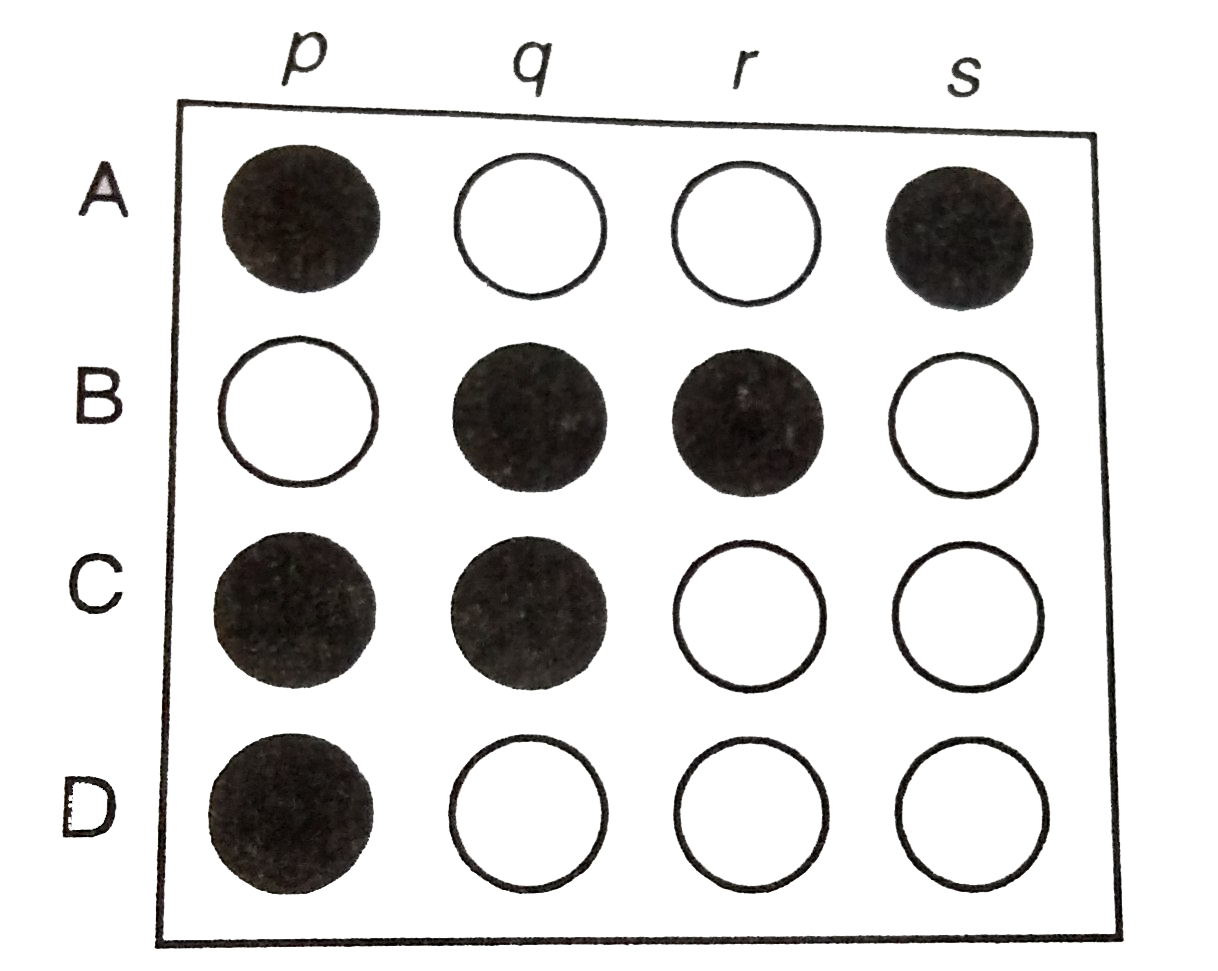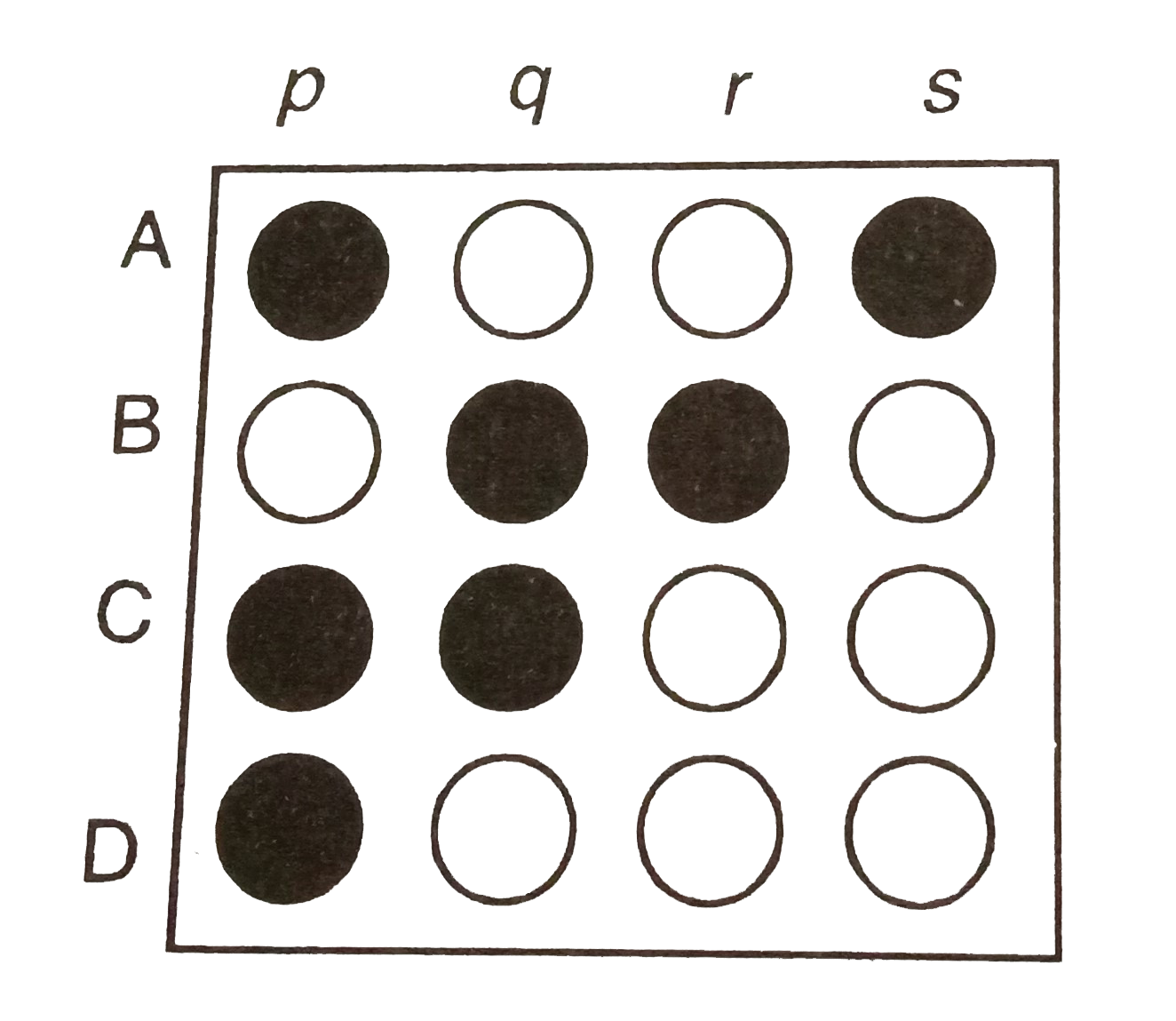Column IColumn II(A) Chemisorption p Exothermic(B) Physical adsorptionq Endothermic(C) Desorptionr Removal of adsorbed material (D) Activation of adsorbents Specifi in nature

The correct Answer is:A, B, C, D
Topper's Solved these Questions
- SURFACE CHEMISTRYBOOK - DINESH PUBLICATIONCHAPTER - SURFACE CHEMISTRYEXERCISE - Integer Type Question
4 Videos
- SURFACE CHEMISTRYBOOK - DINESH PUBLICATIONCHAPTER - SURFACE CHEMISTRYEXERCISE - Reason Assertion (A) Type MCQs
10 Videos
- SURFACE CHEMISTRYBOOK - DINESH PUBLICATIONCHAPTER - SURFACE CHEMISTRYEXERCISE - Linked Comprehension Type MCQs
10 Videos
- STRUCTURE OF ATOMBOOK - DINESH PUBLICATIONCHAPTER - STRUCTURE OF ATOMEXERCISE - Reason Type Questions
1 Videos
- THE ALKALI METALSBOOK - DINESH PUBLICATIONCHAPTER - THE ALKALI METALSEXERCISE - ULTIMATE PREPARATORY PACKAGE
19 Videos
Similar Questions
Column - I and Column - II contains four emtries each. Entries of Column -I are to be matched with some entries of Column - II . One or more than one entries of Column -I may have the matching with the same entries of Column - II.
column-Icolumn-II(A) Chemisorption(P) Exothermic(B) Physical adsorption(Q) Endoothermic (C) Desorption(R) Removal of adsorbed material(D) Activation of adsorbent(S) Highly specific in nature
View SolutionColumn - I and Column - II contains four emtries each. Entries of Column -I are to be matched with some entries of Column - II . One or more than one entries of Column -I may have the matching with the same entries of Column - II.
column-Icolumn-II(A) Chemisorption(P) Exothermic(B) Physical adsorption(Q) Endoothermic (C) Desorption(R) Removal of adsorbed material(D) Activation of adsorbent(S) Highly specific in nature
View SolutionColumn - I and Column - II contains four emtries each. Entries of Column -I are to be matched with some entries of Column - II . One or more than one entries of Column -I may have the matching with the same entries of Column - II.
column-Icolumn-II(A) Chemisorption(P) Not specific and decreases with temperature (B) physisorption(Q)sepecific and increases with temperature(C) Desorption of a solute on liquid surface(R) Increases the surface tension of the liquid (D)Adsorption of a solute on a liquid (S) Decreases the surface tension of the liquid
View SolutionColumn - I and Column - II contains four emtries each. Entries of Column -I are to be matched with some entries of Column - II . One or more than one entries of Column -I may have the matching with the same entries of Column - II.
column-Icolumn-II(A) Chemisorption(P) Not specific and decreases with temperature (B) physisorption(Q)sepecific and increases with temperature(C) Desorption of a solute on liquid surface(R) Increases the surface tension of the liquid (D)Adsorption of a solute on a liquid (S) Decreases the surface tension of the liquid
View SolutionHere each question contains statements are given in two columns which have to be matched. Statements in Column I are labelled as A,B,C and D whereas statements in Column II are labelled as p,q,r and s. The answer to these questions are to ne appropriately bubbled as illustrated below in the following example.
If the correct matches are A−p,A−s,B−q,B−r,c−p,c−q,andD−p then correctly labelled 4×4 matrix should look like

Column-IColumn-II(A)Activation energypHP=HR(B)Threshold energyqHeight of the barrier(C)Heat of reactionrNegative for exothermic reaction(D)Role of catalystsActivated complex
View SolutionColumn IColumn II(a)Pencillinp.Antiseptic(b)Chloramphenicolq.Antibiotic(c)Phenolr.Bactericidal(d)Chloroxylenols.Disinfectant
View SolutionMatch the column :
Column IColumn II(A). Sucrose(P). Two acetals(B). Maltose(Q). No hemiacetal(C). Lactose(R). β−1,4'−glycosidic bond(D). Cellulose(S). Hydrolysis product is glucose
View Solution∣∣ ∣ ∣ ∣ ∣ ∣∣Column IColumn II(A)Adenine(p)Purine(B)Thymine(q)Pyrimidine(C)Uracil(r)RNA(D)Deoxyribose(s)DNA∣∣ ∣ ∣ ∣ ∣ ∣∣

View SolutionMatch the column I with column II
Column-IColumn-II(A)Starch(p)Natural polymer(B)Nylon-6(q)Synthetic polymer(C)Peptide Bond(r)Amide linkage(D)Maltose(s)Glycoside linkage(t)Oligosaccharide
View SolutionMatch the column I with column II
Column-IColumn-II(A)Starch(p)Natural polymer(B)Nylon-6(q)Synthetic polymer(C)Peptide Bond(r)Amide linkage(D)Maltose(s)Glycoside linkage(t)Oligosaccharide
View Solution
